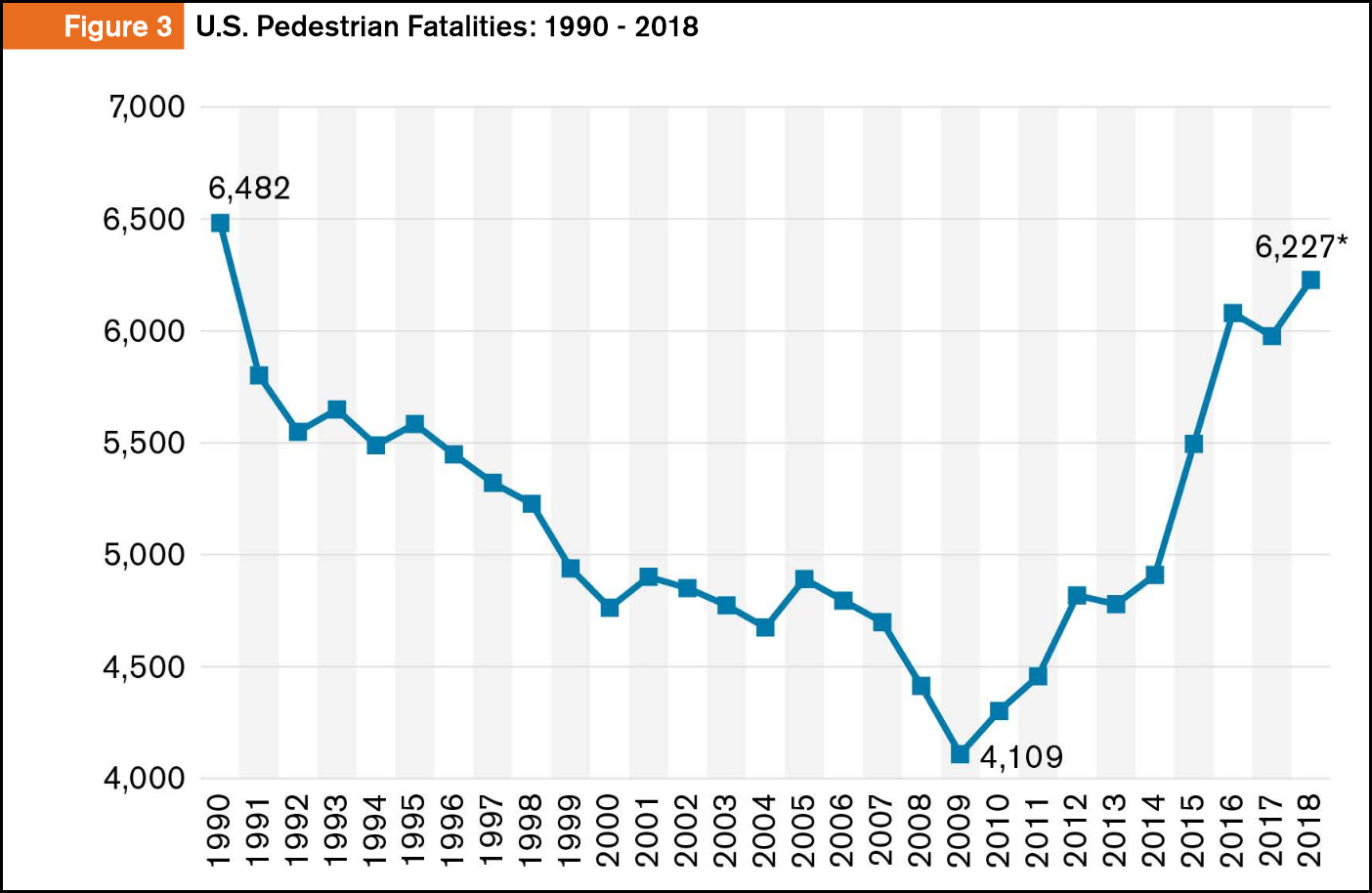I missed this when it made the rounds a few months ago, but today the LA Times tells us that pedestrian fatalities have been rising steeply for the past decade. Here’s a chart from the Governors Highway Safety Association:

This is something of a mystery, but the most interesting part of the Times story is this:
Elsewhere, pedestrian deaths are dropping. In the early 2000s, the European Union began requiring automakers to pass pedestrian safety tests before they could sell vehicles in Europe. The regulations spurred design changes, and pedestrian fatalities declined by 36% in the EU from 2007 to 2016. Japan adopted similar regulations. It too has seen pedestrian deaths drop.
The same approach in the U.S. could save countless lives, experts say.
Design changes? What design changes? Here’s an explanation written 14 years ago:
The focus of the new EU standards has been on safer front-end design to minimize injuries to the legs and head in 25 mph crashes. They will require passenger cars and light vans to pass tests involving the A-pillar, bumper, the hood’s leading edge and windshield to determine if they protect adults and children from leg and head injuries in frontal impact accidents. Automakers will also be required to install flexible bumpers and hoods that crumple and to add 8 inches of space between the exterior structure and the under-hood structure from the front bumper to the windshield to better disperse the impact energy of a person hitting the front end. More stringent rules are expected to be phased in beginning in 2010, when the number of tests doubles to four — two for leg injuries and two for head injuries. The changes are expected to save 2,000 lives annually.
Apparently the NHTSA has never bothered itself to get serious about this stuff, but it’s probably coming to America sooner or later.
Of course, this still doesn’t explain why pedestrian deaths have skyrocketed since 2009. The popularity of SUVs gets some of the blame, but can’t account for all of it. Cell phones and so forth are a global phenomenon, so there’s no special reason they should have an outsize effect in the US. For now it remains a mystery.

















